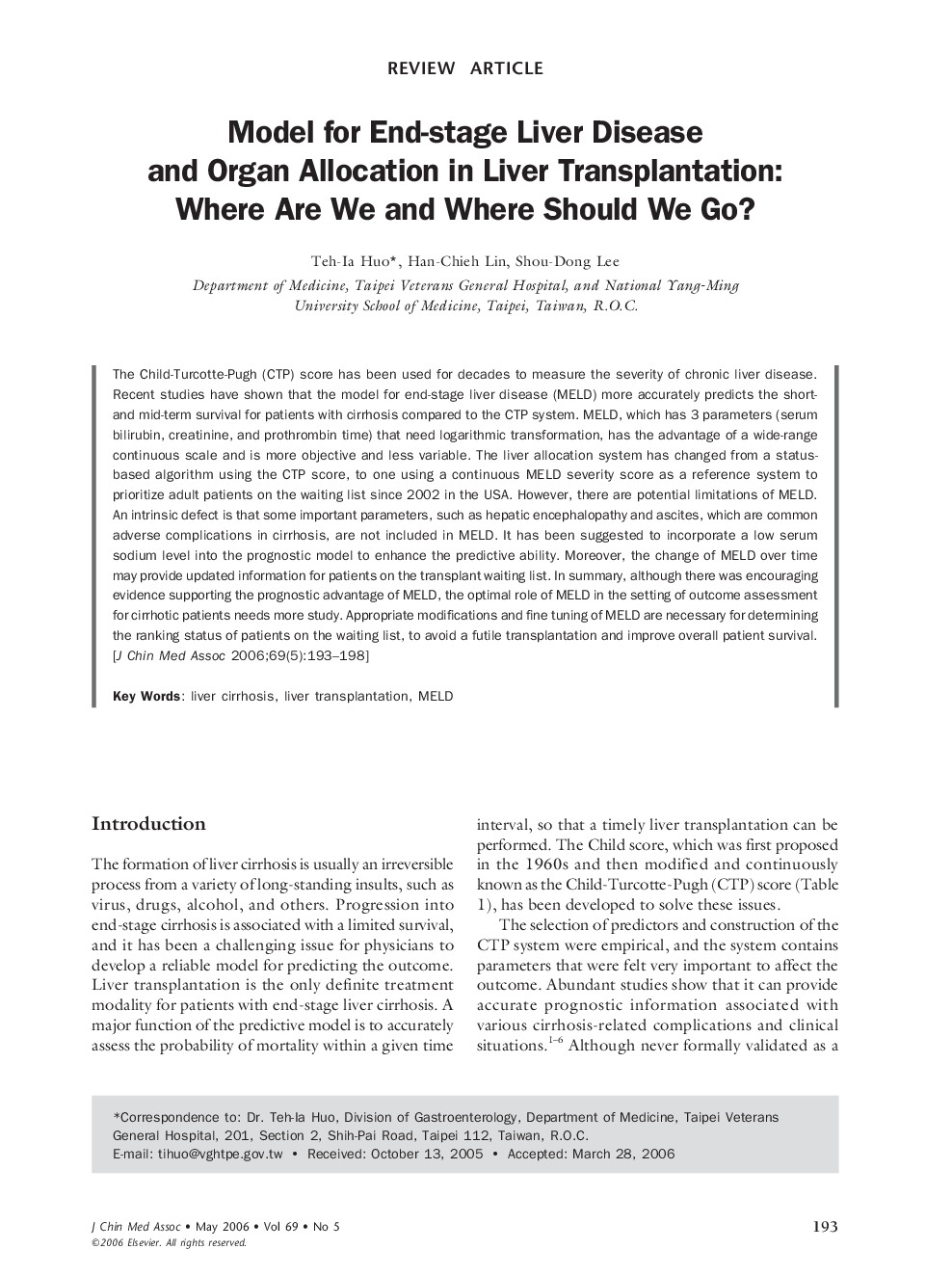| Article ID | Journal | Published Year | Pages | File Type |
|---|---|---|---|---|
| 3477629 | Journal of the Chinese Medical Association | 2006 | 6 Pages |
The Child-Turcotte-Pugh (CTP) score has been used for decades to measure the severity of chronic liver disease. Recent studies have shown that the model for end-stage liver disease (MELD) more accurately predicts the short-and mid-term survival for patients with cirrhosis compared to the CTP system. MELD, which has 3 parameters (serum bilirubin, creatinine, and prothrombin time) that need logarithmic transformation, has the advantage of a wide-range continuous scale and is more objective and less variable. The liver allocation system has changed from a status-based algorithm using the CTP score, to one using a continuous MELD severity score as a reference system to prioritize adult patients on the waiting list since 2002 in the USA. However, there are potential limitations of MELD. An intrinsic defect is that some important parameters, such as hepatic encephalopathy and ascites, which are common adverse complications in cirrhosis, are not included in MELD. It has been suggested to incorporate a low serum sodium level into the prognostic model to enhance the predictive ability. Moreover, the change of MELD over time may provide updated information for patients on the transplant waiting list. In summary, although there was encouraging evidence supporting the prognostic advantage of MELD, the optimal role of MELD in the setting of outcome assessment for cirrhotic patients needs more study. Appropriate modifications and fine tuning of MELD are necessary for determining the ranking status of patients on the waiting list, to avoid a futile transplantation and improve overall patient survival.
